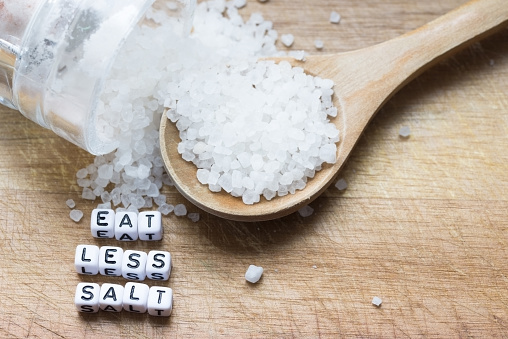Eat Less Salt High sodium consumption 2 grams per day, equivalent to 5 grams of per day. and insufficient potassium intake (less than 3.5 grams per day) contribute to high blood pressure and increase the risk of heart disease and stroke.
The primary foundation of sodium in our diet is salt, but it may come from sodium glutamate. used as spices in many parts of the world. Most people consume salt – an average of 9-12 grams per day, or about twice the recommended maximum intake level.
Eating less than 5 grams of salt a day for adults helps lower blood pressure and reduce the risk of cardiovascular disease, stroke, and coronary heart attacks.
Table of Contents
The main benefit of dropping salt intake is to lower blood pressure.
WHO member states have decided to reduce salt intake among the world’s population by 30% by 2025.
Identify salt intake reduction as one of the most cost-effective measures countries can take to improve population health outcomes. Basic salt reduction measures are likely to add a year of healthy life to life at a lower cost than average annual income or GDP per person.
An estimated 2.5 million deaths a year can be avoided if global salt consumption is reduced to the recommended level.
The steady increase in processed foods and the rapid urbanization and changing lifestyles are transforming dietary patterns.
The availability of highly industrialized food, which is more affordable than ever before, is also increasing. People worldwide consume more energy-rich foods with high soaked fats, trans fats, sugars, and salt. Salt is the primary basis of sodium, and increased sodium consumption is associated with high blood pressure and increased risk of heart disease and stroke.
At the same time, however, with dietary patterns, people tend to consume fewer fruits, vegetables.
Fibers the essential ingredients of a healthy diet.
Fruits and vegetables cover potassium. which contributes to reducing blood pressure.
Salt in the diet may derives from process foods, either because they contain a high percentage of salt in particular .And also takeaways, meats manufactured as pork, bacon, and salami, cheese, salted snacks, and quick-prepare noodles, among other types or because they consumed in large quantities . bread and process grain products .Salt is also add to food through cooking meat broth cubes and spices .or on the table .soy sauce, fish sauce, and travel salt.
However, some manufacturers are currently reformulating recipes to reduce salt content.
In their products, and consumers should read food labels and choose products containing little sodium.
Recommendations for salt reduction
Adults: WHO mentions that adults consume less than 5 g (less than one teaspoon) of salt per day. recommends that the optional maximum salt used to take in adults.
adjusted downwards in children aged 2 to 15 years. Based on their energy requirements compared to adult requirements. This recommendation does not address exclusive breastfeeding (0-6 months) or supplementary feeding with continued breastfeeding (6-24 months).
All salt should treated with iodine.
Or with iodine is also element essential for the healthy brain development in fetuses and young children. And optimize the functioning of mental functions in general.
Information on salt, sodium and potassium
Sodium is one of the nutrients necessary to maintain plasma size.
balance basal-acid compounds, transmit nerve impulses, and perform normal cell functions. Excessive sodium also come associate with negative health is also comes, including high blood pressure.
The primary factors contributing to sodium food consumption depend up on the population’s cultural context dietary habits.
Sodium is naturally found in a variety of foods.
It is predominantly in the high quantities in processed to foods such as bread, processed meats, light foods, and spices soy sauce, or fish sauce, for example.
Sodium also found in sodium glutamate, uses as food additives in many parts of the world. Potassium is one of these essential nutrients needs to maintain total size of fluids in the body, acid balance and electrolyte, and normal functioning of cells .is also expects in the various of un foods, and especially fruits and vegetables: increased potassium intake condensed systolic and diastolic blood pressure in adults.


